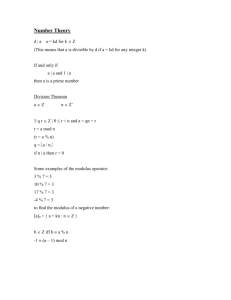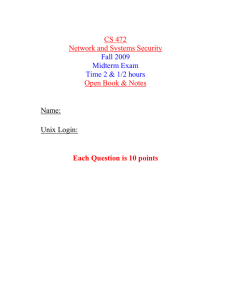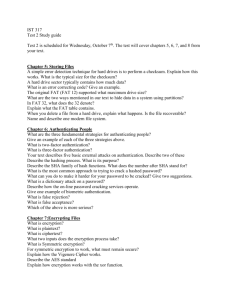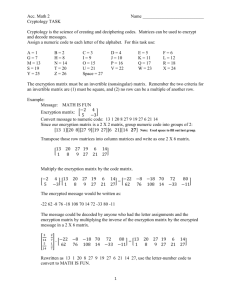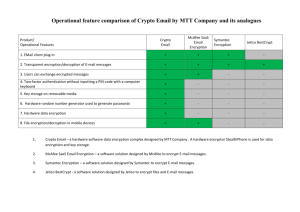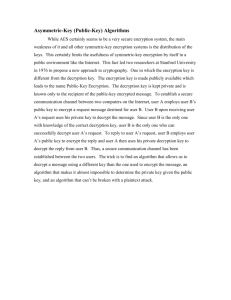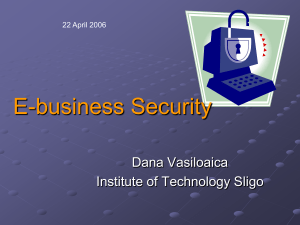Test 2
advertisement
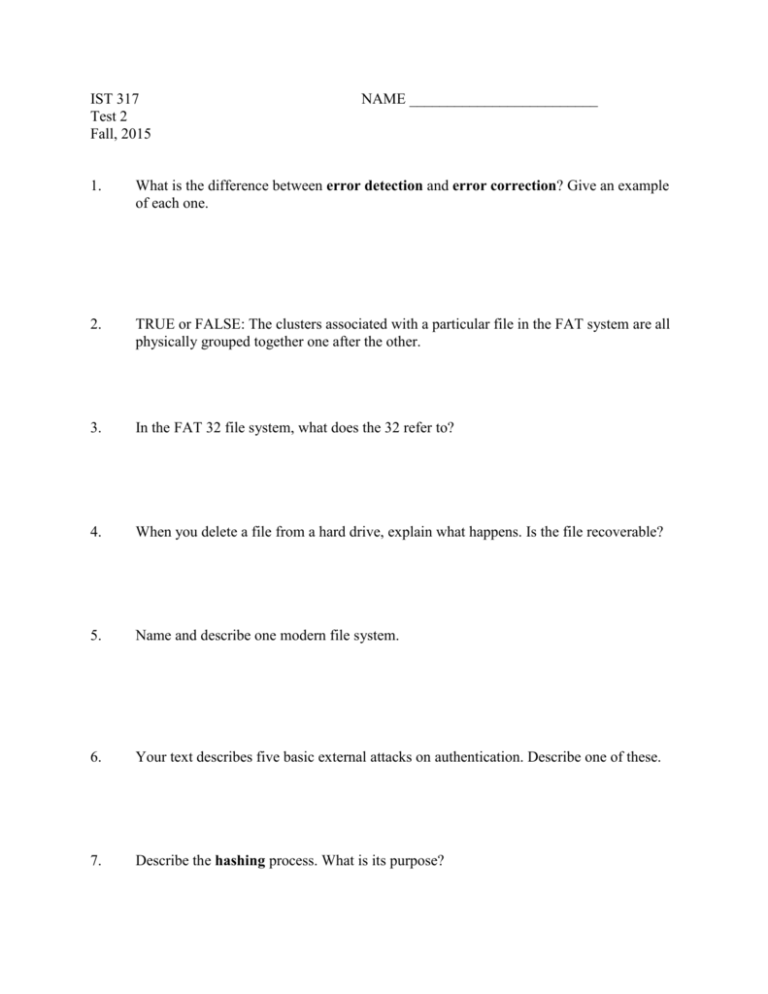
IST 317 Test 2 Fall, 2015 NAME _________________________ 1. What is the difference between error detection and error correction? Give an example of each one. 2. TRUE or FALSE: The clusters associated with a particular file in the FAT system are all physically grouped together one after the other. 3. In the FAT 32 file system, what does the 32 refer to? 4. When you delete a file from a hard drive, explain what happens. Is the file recoverable? 5. Name and describe one modern file system. 6. Your text describes five basic external attacks on authentication. Describe one of these. 7. Describe the hashing process. What is its purpose? 8. What is the most common approach in trying crack a hashed password? 9. What can you do to make it harder for your password to be cracked? Give two suggestions. 10. What is a dictionary attack on a password? 11. What is Symmetric encryption? 12. Explain how encryption and decryption works with the xor function. Give an example of an 8-bit binary message and an 8-bit binary key. 13. For symmetric encryption to work, what must remain secure? 14. Which is the more secure encryption standard: DES or AES? Why? 15. Explain how the Vigenere Cipher works. 16. Why is it a mistake to encrypt data using a reused key stream? 17. If it is not good to reuse a key stream for encoding, how do you guarantee a new internal key every time you encrypt a file? 18. With public key encryption, if Bob wants to send an encrypted file to Alice, what key does Bob use to encrypt the file? What key does Alice use to decrypt the file sent by Bob? 19. Give a difference between a secret key and a public key encryption. 20. Most public key encryption systems are based upon what concept in number theory? Identify what is typically the public key and what is typically the private key.

